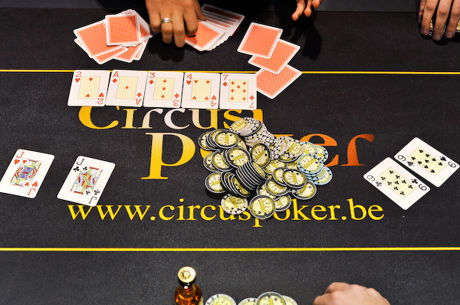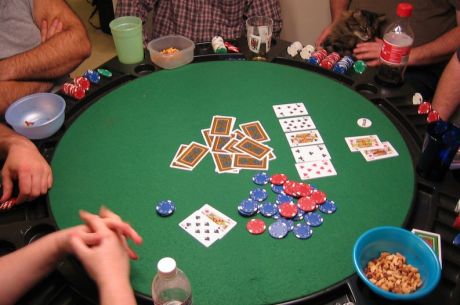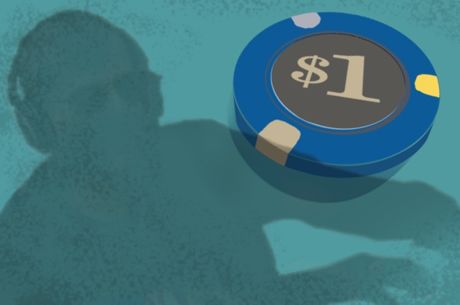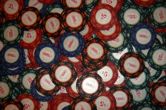Hosting an Awesome Poker Game at Home: Playing Cards
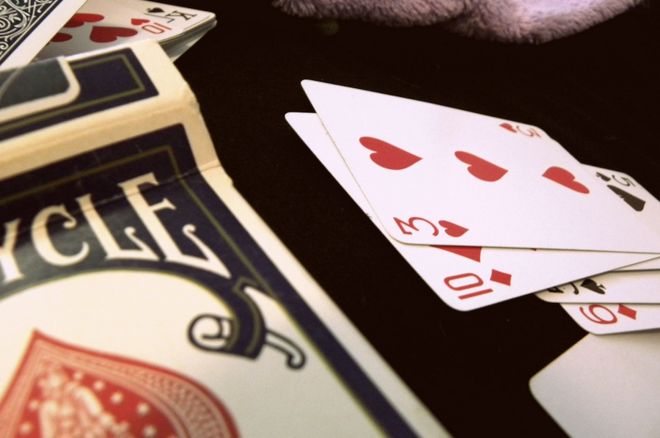
You can't play poker without cards. But which cards should you get for your awesome home game? This article should give you all the options to consider.
Plastic or Plastic-Coated Playing Cards
Your first decision is whether to get plastic cards or plastic-coated cardboard cards.
Plastic-coated cards are made by many manufacturers. The most popular brands are Bicycle and Bee (both made by the U.S. Playing Card Company), Aviator, Hoyle, and Tally-Ho. These are the type of cards your father and grandfather used in their home games.
When they are new they are extremely smooth and have what’s sometimes called an "air cushion" feel when you deal. When they are even moderately used, however, they get sticky, bent, folded, dinged, and creased. Serious players can’t use them after one or two games because of the obvious marks. They will cost you between $1 to $4 per deck, can be purchased by the dozen, and are widely available including in convenience stores and drug stores, as well as online.
Plastic cards are not generally available in retail stores but can be purchased easily at numerous online retailers including Amazon, Ebay, and my personal favorite, Discount Poker Shop. They will generally run you from $10 to $30 for a two-pack set, though one company (Royal) sells their two-packs for as little as $3. The major brands, of better quality, are Kem, Copaq, Da Vinci, A-Plus, Gemaco, and Dal Negro. Royals are decidedly thinner and less stiff.
At first glance you might conclude that the less expensive option is to go with the plastic-coated card. If you have a regular game, however, and want cards to remain in at least moderately good condition, you’ll find that plastic cards will probably save you money in the long run, as they stay in excellent condition for dozens of sessions. They can also be washed (but don’t use hot water or put them in the dishwasher or washing machine).
You’ll also find that though it may be awkward to deal plastic cards at first — because you’re probably familiar with the plastic-coated variety) — over time you will adjust to and prefer dealing the plastic cards.
PokerNews Top Five Playing Cards to Buy
| Rank | Brand | Value | Quality | Our Rating | Buy on Amazon |
| 1 | Bicycle Playing Cards | ***** | ***** | ***** | Buy Now |
|---|---|---|---|---|---|
| 2 | Copag Playing Cards | ***** | ***** | ***** | Buy Now |
| 3 | KEM Playing Cards | **** | *** | **** | Buy Now |
| 4 | Modiano Playing Cards | **** | **** | **** | Buy Now |
| 5 | Fournier Playing Cards | **** | **** | **** | Buy Now |
Bridge or Poker Size Playing Card Decks
Decks come in two sizes — "bridge" and "poker." The "poker" cards are a quarter-inch wider. Ironically, nearly all poker rooms use the smaller "bridge" decks for their poker games, though your home game players may prefer the wider deck.
This is a matter of personal preference, with no difference in cost, durability, or ease of use.
Regular, Jumbo, Magnum & 2-Pip/4-Pip
The traditional image on cards from a poker deck is now known as "regular," with a small image of the card in the top left and bottom right of the card. There are variations from this that you may prefer.
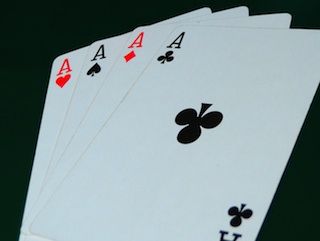
"Jumbo Index" cards feature a larger corner image, making it much easier to see. This makes them especially popular among older players, who often have a more difficult time seeing the flop, especially if they are in the end seat of a full-size casino hold’em table.
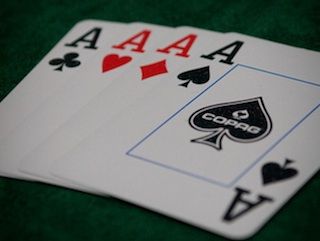
However, since the corner image is much larger than the standard card, the player must lift up more of the card to see the image, making them less popular among many regular players who only lift up the corners to view them.
Meanwhile "Magnum Index" cards feature an even larger corner index than the Jumbo Index. They offer the same advantages and disadvantages of the Jumbo Index cards, only exaggerated.
Also, standard cards are "2-pip" meaning the pips appear in the top left and bottom right corners. But there are also "4-pip" cards, with pips in all four corners. The 4-pip cards are used more in Europe and are not generally available in the United States.
One-Way Cards
There is one other factor that you should consider when purchasing cards for your home game. Some cards — generally the bridge-size plastic-coated cards — have animal, floral, or other images on the card backs that render them "one-way" cards.
Unlike two-way cards for which the backs look the same if you turn them upside down, one way cards can be faced in a certain direction. Imagine the image of a dog on the back of the card, with all but one card showing the dog sitting up, and the ace of spades showing the dog upside down. Not a good idea for a poker game.
Conclusion
Cards are a relatively inexpensive purchase, compared to your poker table and your chips. Unlike chips, players tend to notice and appreciate high quality plastic cards, that resist marks, stay stiff, and are easy to deal.
You may want to try out a few different brands before settling on the ideal set for your home game. And while you’re at it, spring for a few cut cards, to use when you deal to keep the bottom card from getting exposed. Happy dealing!
Also in this series...
- Hosting an Awesome Poker Game at Home: The Poker Table
- Hosting an Awesome Poker Game at Home: Who to Invite
- Hosting an Awesome Poker Game at Home: Poker Chips
- Hosting an Awesome Poker Game at Home: Tournaments vs. Cash Games
- Hosting an Awesome Poker Game at Home: Drinks and Snacks
Photos: "po po po poker face ;)" (adapted), Julia Lamphear, CC BY 2.0; "Four Aces - Poker" (adapted), Poker Photos, CC BY 2.0; "IMG_8241" (adapted), Arnaud Fraioli, CC BY-ND 2.0.
Ashley Adams has been playing poker for 50 years and writing about it since 2000. He is the author of hundreds of articles and two books, Winning 7-Card Stud (Kensington 2003) and Winning No-Limit Hold'em (Lighthouse 2012). He is also the host of poker radio show House of Cards. See www.houseofcardsradio.com for broadcast times, stations, and podcasts.
Be sure to complete your PokerNews experience by checking out an overview of our mobile and tablet apps here. Stay on top of the poker world from your phone with our mobile iOS and Android app, or fire up our iPad app on your tablet. You can also update your own chip counts from poker tournaments around the world with MyStack on both Android and iOS.
In this Series
- 1 Hosting an Awesome Poker Game at Home: The Poker Table
- 2 Hosting an Awesome Poker Game at Home: Who to Invite
- 3 Best Poker Chips: Top Poker Chip Sets for Home Games
- 4 Hosting an Awesome Poker Game at Home: Tournaments vs. Cash Games
- 5 Hosting an Awesome Poker Game at Home: Playing Cards
- 6 Hosting an Awesome Poker Game at Home: Drinks and Snacks

